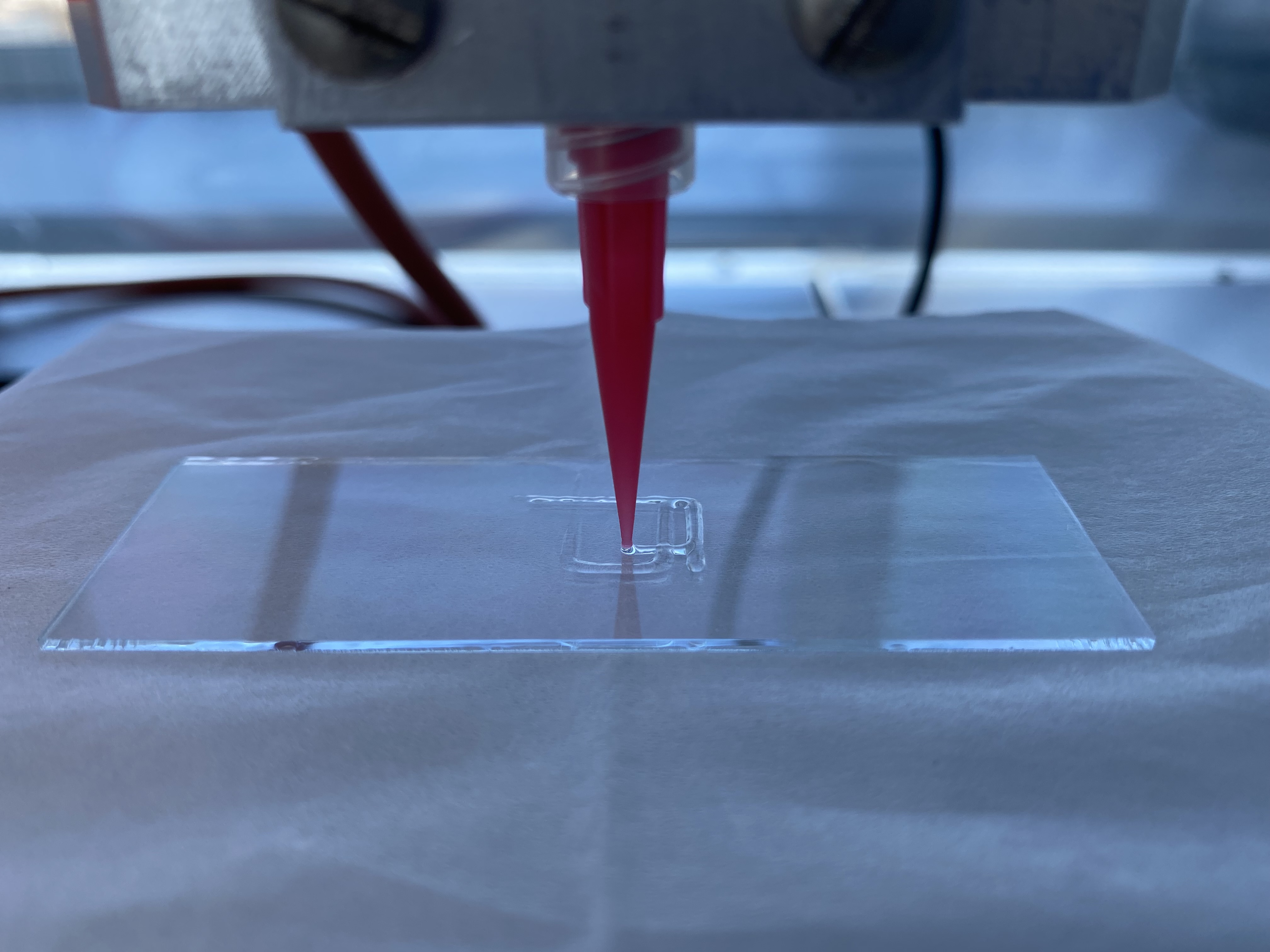When it comes to closing the implant supply gap, the most promising solution lies in 3D bioprinting. This is an additive manufacturing process that prints living cells in a biocompatible substrate, layer by layer, into stable, well-defined 3D constructs. These 3D-printed structures are currently the subject of research and development in the diverse fields of regenerative medicine and tissue engineering, and are also becoming increasingly important in industrial applications.
SOP_BioPrint – Protocols for standardized bioprinting
Reproducibility through standardization
When it comes to the transition to industrial applications, criteria such as accuracy of shape and reproducibility of products generated by additive manufacturing are of crucial importance. The considerable diversity of the printer systems available on the market and the current low level of standardization of available biomaterials for manufacturing bio-inks lead to a “data jungle,” where it is difficult to establish any universal criteria for materials and processes that would allow 3D bioprinting to be carried out in a targeted and results-based way.
Round robin test for a standard operating procedure (SOP)
To solve these challenges, the Karlsruhe Institute of Technology (KIT) invited 13 renowned partners, selected on the basis of their published expertise in this field, to participate in a round robin test as part of the SOP_BioPrint project. These trials are normally used for quality assurance or to validate measuring and testing procedures. Standard operating procedures (SOPs) give precise descriptions of manufacturing or testing procedures to ensure that the results are always reproducible, and therefore comparable, regardless of the manufacturer or test laboratory that carries them out.
The SOP_BioPrint project therefore investigated the extent to which it is possible to print reproducible and comparable structures with standardized bio-inks in different locations and on different devices, but with the same parameters. To get around the variances that arise from preparing inks at the locations with different 3D bioprinters, partners supplied two bio-inks in addition to one commercially available bio-ink.
Fraunhofer IGB not only participated in this round robin test, but also supplied a gelatin-based crosslinkable bio-ink for all the partners involved. This meant that the IGB bio-ink was one of the three bio-inks investigated in the round robin test. As well as the material (modified gelatins, radical starter, buffer), we also supplied the round robin partners with an SOP for the modification and formulation of the bio-inks. This SOP allowed all those taking part to produce and use bio-inks with identical chemical and physical properties.
Methacrylated gelatin according to standardized modification process
This involvement in the round robin test led to the creation of the first standardized manufacturing procedure for a gelatin-based bio-ink developed at Fraunhofer IGB. Here, the now standardized modification of gelatin with methacrylic anhydride stands out as a simple and cost-effective strategy for integrating photopolymerizable groups into the biopolymer.
The resulting methacrylated gelatin derivatives can crosslink covalently through photo-induced radical polymerization. In this way, they form a versatile matrix that can be used to produce tissue analogs ranging from blood vessels, cartilage, ligaments, tendons and bones to fatty tissue and heart tissue [1].
As well as the biological advantages, another important feature is the ability to use chemically crosslinkable gelatin-based hydrogels in bioprinting to establish mechanical stiffness. Methacrylation also allows the rheological behavior of the gelatin to be controlled so that it becomes fluid at room temperature. This provides a high degree of control over the hydrogel design in 3D bioprinting.
Literature
[1] Gonçalves, A.M., Moreira, A., Weber, A., Williams, G.R., Costa, P.F. (2021) Osteochondral Tissue Engineering: The Potential of Electrospinning and Additive Manufacturing, Pharmaceutics, 13, 983. https://doi.org/10.3390/pharmaceutics13070983
Project information
Project title
SOP_BioPrint – Protocols for standardized bioprinting
Project duration
May 2021 – April 2022
Project partners
- Karlsruhe Institute of Technology KIT, Institut für Funktionelle Grenzflächen (IFG), (Coordination)
- Fraunhofer IGB, Stuttgart
- University Hospital Würzburg
- University of Freiburg, Institut für Mikrosystemtechnik
Funding
We would like to thank the German Federal Ministry of Education and Research (BMBF) for funding the project "SOP_BioPrint", promotional reference 13XP5071.

 Fraunhofer Institute for Interfacial Engineering and Biotechnology IGB
Fraunhofer Institute for Interfacial Engineering and Biotechnology IGB